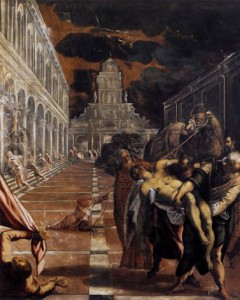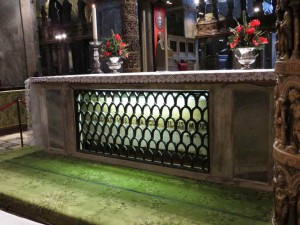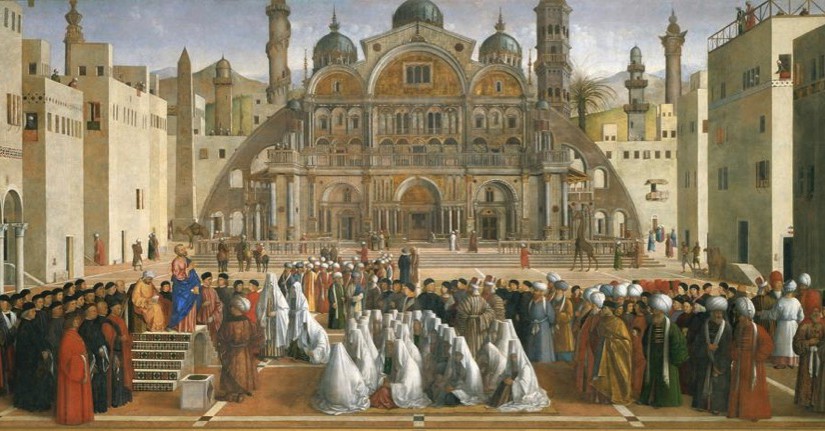In 828 CE, the Muslim ruler of Alexandria, Egypt supposedly planned to destroy all the Christian relics in the city. Two monks from Venice who happened to be in Alexandria at the time decided that they had to save the most important Christian relic in the city. The body of Saint Mark, author of the earliest New Testament Gospel, was kept in the Church of Saint Mark. The monks convinced the local priests that the only way to save Saint Mark’s holy relics was by stealing them away to Venice.

The monks hid the relics buried under a layer of pork and cabbage. The Muslim officials could not touch the pork, and so the relics were carried out of Alexandria to Venice, where they reside today in San Marco (Och 2011). Today, Saint Mark’s holy remains and his church in the center of Venice are defining features of the city. The legend of the monks hiding the relics in pork is a story told with pride and as a factual piece of the city’s history (“The Annunciation” 2012).
Prior to Saint Mark, the patron saint of Venice was Saint Theodore of Amasea. Venice’s rival cities, like Rome and Amalfi, had relics from Jesus’s 12 Apostles. Saint Theodore did not have the religious authority or power of the other saints. While the monks did perhaps save Saint Mark’s relics from destruction, they also managed to increase the political and religious prestige of Venice by bringing such relics into the city (Nelson 2013). Relics can often be connected to political power. While in Alexandria, Saint Mark founded the Coptic Orthodox Church in 48 CE. At Saint Mark’s Basilica in Alexandria, the story of Saint Mark’s relics are different. The Basilica still houses the head of Saint Mark; San Marco in Venice has only his body. The Coptic Orthodox Church has a claim to the relics of Saint Mark because he founded their church (The Coptic Orthodox Church). Just as Venice used the relics of Saint Mark to increase its prestige, the Coptic Orthodox Church uses the fact that they have a holier relic than Venice–Saint Mark’s head versus the rest of his body–to prove its religiosity and influence.

In the modern world, legal claims define ownership of artifacts. Egypt and Germany have been using legality claims to define ownership of the “Bust of Nefertiti” for years (Bearden 2012). Artifacts with such cultural significance must have a legal basis for why a country owns them. But in the case of the body of Saint Mark, there is no concern for legality. Instead, Venetian monks stealing and then tricking the Egyptian officials is not a concern. The great heist is part of what makes the history of the relic so fascinating.
